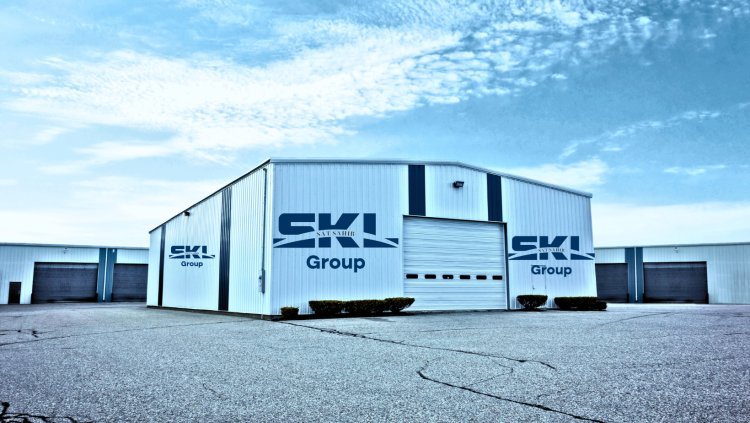“How Smart Warehousing is Transforming Traditional Warehouse Services”
Share this Post to earn Money ( Upto ₹100 per 1000 Views )

In the constantly changing world of logistics and supply chain, warehousing has seen a revolutionary change. What was once a fixed location for goods storage has now become a centre of innovation. Due to intelligent warehousing, conventional warehouse services are being reengineered into technology-enabled, highly efficient, and data-driven operations.
In this blog post, we’ll explore what smart warehousing is, how it’s disrupting traditional models, and why businesses of all sizes should consider this shift to gain a competitive edge.
What is Smart Warehousing?
Smart warehousing describes the implementation of contemporary technologies such as artificial intelligence (AI), machine learning (ML), robotics, Internet of Things (Iot), and Warehouse Management Systems (WMS) in the warehousing function. The technologies collaborate to automate, simplify, and maximise different warehouse tasks, ranging from tracking inventory to picking and packing orders.
In contrast to conventional warehousing, which is based on labour-intensive processes and human intervention, smart warehousing focuses on automation, efficiency, accuracy, and real-time data visibility.
Traditional vs. Smart Warehouse Services: A Quick Comparison
Feature Traditional Warehousing Smart Warehousing
Inventory Tracking Manual entry, RFID/Iot-enabled, real-time
Order Picking: Human labour, Robotic automation
Data Management: Spreadsheets or basic ERP, Advanced WMS, and cloud platforms
Operational Speed Slower, error-prone Fast, accurate, scalable
Human Dependence High Lowered, managed by AI systems
Cost Labour-intensive, risk of inefficiencies Optimised with improved ROI, long-term
Key Technologies Driving Smart Warehousing
1. Warehouse Management Systems (WMS)
A WMS is the backbone of intelligent warehousing. It manages inventory, monitors stock movement, optimises space allocation, and interfaces with other logistics applications. A strong WMS minimises manual errors and enhances clarity in operations.
2. Iot (Internet of Things)
Iot sensors such as RFID tags, barcode readers, and temperature monitors offer real-time information on inventory, ambient conditions, and equipment usage. This allows precise tracking and improved decision-making.
3. Automation and Robotics
Robotic devices and autonomous mobile robots (AMRS) are able to pick, pack, and move products within the warehouse with minimal or no human intervention. Automation provides faster speeds, decreases the cost of labour, and eliminates the need for human errors.
4. Artificial Intelligence (AI) & Machine Learning (ML)
AI scrutinises data to forecast demand, optimise stock levels, and recommend quicker paths throughout the warehouse. ML algorithms refine processes further by learning from past trends.
5. Cloud Computing
Smart warehouses are networked with cloud-based systems that provide central control, real-time reporting, and location access. This provides scalability and distant warehouse monitoring.
Advantages of Smart Warehousing for Enterprises
✅ 1. Better Inventory Accuracy
Inventory is traced in real-time using RFID tags and Iot sensors. Stockouts, overstocking, and order mismatches — the pitfalls of manual warehouses — are averted.
✅ 2. Accelerated Order Fulfilment
Automated systems minimise order pick, pack, and ship times to a great extent. E-commerce and retail companies result in quicker delivery and improved customer satisfaction due to.
✅ 3. Enhanced Warehouse Space Utilisation
AI systems rearrange products within the warehouse by size, demand, and pick frequency, and thus the storage efficiency of the warehouse increases.
✅ 4. Reduced Operational Costs
Even though the initial investment in smart warehousing might be expensive, it is repaid in the form of lower labor cost, fewer mistakes, decreased return rates, and increased productivity.
✅ 5. Scalability
Smart warehouses can scale operations by seasonal demand, product growth, or multi-channel distribution with ease.
✅ 6. Real-Time Insights and Reporting
Integrated dashboards allow managers to monitor important metrics — including stock levels, employee productivity, and order status — to make informed decisions.
Use Case: E-commerce Industry
Picture an e-commerce company processing 5,000+ orders a day. In a conventional warehouse, employees manually pick and pack each order with the risk of delays and mistakes.
In a smart warehouse configuration, here is what is different:
RFID tags monitor each product in real time.
Bots bring the products to the pick stations automatically.
AI provides the shortest picking routes.
WMS updates order status and integrates with the e-commerce platform.
This shift allows for:
30–50% quicker order processing
99% inventory accuracy
Extreme reduction in return-associated losses
Sat Kabir Logistics in Gurgaon and other firms are already embracing smart warehousing technologies to aid contemporary supply chain requirements and e-commerce expansion.
Smart Warehousing Implementation Challenges
Despite the advantages, the shift to a smart warehouse is not without challenges:
High initial expense on automation and software
Training employees for new systems and technologies
Data security threats in case cloud systems aren't secured
Integration complexity with the current ERP or logistics systems
Tech system and robotics infrastructure maintenance
But these challenges can be reduced by engaging the services of an experienced warehouse service provider that provides end-to-end implementation assistance.
Smart Warehousing in India: The Emerging Trend
India is experiencing high warehousing growth driven by e-commerce, pharmaceuticals, retail, and FMCG industries. Smart warehousing is gaining popularity in major logistics hubs such as:
Gurgaon (NCR)
Mumbai
Bangalore
Chennai
Hyderabad
Providers such as Sat Kabir Logistics are leading this change by providing intelligent warehouse services such as:
Cloud-based WMS
Tech-enabled returns management
Smart inventory control
Temperature-controlled smart storage
These functionalities are particularly beneficial for startups and businesses that want to grow without huge capital outlays.
Future of Smart Warehousing
By 2030, experts estimate that over 75% of the world's warehouses will have some level of smart technology. Future innovations could include:
AI-driven forecasting for ultra-efficient stocking
Drone-based inventory checks
Blockchain for end-to-end supply chain transparency
Solar and energy-efficient smart warehouses
Early adopters of smart warehousing will be rewarded with added resilience, efficiency, and competitiveness in the marketplace.
Conclusion
Smart warehousing is not only a trend but the future of warehouse services. From real-time tracking to auto-inventory management, it offers unparalleled accuracy, scalability, and customer satisfaction.
Whether you own an e-commerce business or a big retail chain, adopting smart warehouse services can revolutionise your logistics strategy. By collaborating with forward-thinking service providers such as Sat Kabir Logistics, you can leverage top-of-the-line solutions without spending heavily on in-house investments.















